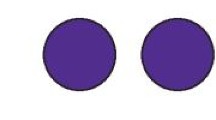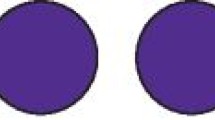Abstract
Design This was a double-blind randomised controlled trial (RCT) conducted over a period of 4 years.
Intervention The trial used a semi-annual dental check-up with preventive treatment which consisted of oral hygiene instruction followed by supervised brushing with fluoride toothpaste and either application of a neutral 1% sodium fluoride gel (4500 ppm) or a placebo gel. After the application of the gel participants were advised to refrain from rinsing, eating or drinking for 30 min.
Outcome measure Caries experience was recorded, measured by D3MFS and by prevented fraction (PF).
Results The mean caries reduction of professionally applied fluoride gel after 4 years, in subjects with baseline caries experience of D3MFS=0 as well as d3mfs=0 was 0.08 D3MFS (standard error (SE), 0.06) and 0.36 d3mfs (SE, 0.22). The PF for D3MFS and d3mfs was 26% (SE, 16%) and 20% (SE, 11%), respectively. This equates to a number-needed-to-treat of 50 in order to save a subject from 1 D3MFS after 4 years.
Conclusions In 4.5- to 6.5-year-old children who had low risk of caries, fluoride gel treatment showed a statistically significant caries-inhibiting effect on D3MFS, which was considered not clinically relevant, and showed no significant effect on d3mfs.
Similar content being viewed by others
Commentary
The prevention of dental caries in children is usually preferable to the various forms of treatment. The use of topical fluoride for caries prevention is a frequent practice. This large and well-conducted double-blind RCT assesses professionally applied fluoride gels as one means of achieving caries reduction in young children. These subjects were taking part in a semi-annual caries preventive programme which included supervised brushing with fluoride toothpaste and sealant application. Children were only entered into the trial if there was evidence of a dentine caries-free permanent and primary dentition at baseline. They were allocated randomly to either the placebo or fluoride gel application by an adequate method of allocation concealment which resulted in two groups that had similar prognostic characteristics. Reasons for attrition and numbers by randomised group are presented for each follow-up and according to a threshold chosen for adherence to the study protocol, and analyses and results for the primary outcome (D3MFS) are presented (in absolute and relative measures) accordingly: for all those who completed the study, for those participating according to the protocol throughout, and for a caries-free and sealant-free subgroup.
Anyone wishing to interpret a trial needs to know how its results compare with those of similar studies, as recognised by the original CONSORT (Consolidated Standards of Reporting Trials) statement. This recommends that the report of a RCT should discuss its findings in the light of the totality of relevant evidence.1 This new trial was published after the completion of two relevant systematic reviews which are mentioned in the discussion section of the trial report. One was carried out by the same group of researchers who conducted this trial2 and the other was a recent Cochrane review, which contains information from nearly 8000 children.3 The results of the new trial have not been formally integrated into the 1998 van Rijkom et al. review,2 but because Cochrane reviews are usually updated every 2 years, they should be incorporated in the next version of the Cochrane review.
Unlike many of the RCTs in the Cochrane review, this study is of long duration and presents an assessment of the caries-inhibiting effect of fluoride gels in low caries-risk children only (99% of whom reported the use of fluoride toothpaste), in both the permanent and primary dentitions. As regards the primary dentition, results are reported only for subjects participating in the protocol for 4 years. These indicate that semi-annual applications of a neutral 1% sodium fluoride gel (4500 ppm fluoride) are not effective in primary teeth. For the main outcome of D3MFS, a statistically significant caries-inhibiting effect was shown for both the above subset of participants (‘per protocol’) as well as for all those subjects who completed the 4-year study period ((‘adhering plus non-adhering subjects’), although the clinical significance of the absolute effect is questioned by the authors. There is no report on side-effects, and further work is needed to identify and quantify potential harmful effects of the gels, particularly because the effect of gels in low caries-risk children using fluoride toothpaste regularly might not be clinically important.
Practice point
-
Although this study provides evidence of a significant beneficial effect of fluoride gel treatment in the permanent teeth of young children at low risk of caries, the clinical relevance is considered low based on the large NNTs obtained from the trial.
References
Clarke M, Alderson P, Chalmers I . Discussion sections in reports of controlled trials published in general medical journals. J Am Med Assoc 2002; 287:2799–2801.
van Rijkom HM, Truin GJ, van't Hof MA . A meta-analysis of clinical studies on the caries-inhibiting effect of fluoride gel treatment. Caries Res 1998; 32:83–92.
Marinho VCC, Higgins JPT, Logan S, Sheiham A . Fluoride gels for preventing dental caries in children and adolescents. The Cochrane Database of Systematic Reviews 2002; Issue 1.
Author information
Authors and Affiliations
Additional information
Address for correspondence: Gert-Jan Truin, Department of Preventive and Community Dentistry and Pedodontology, University of Nijmegen Medical Centre, Nijmegen, The Netherlands.
van Rijkom HM, Truin GJ, van't Hof MA. Caries-inhibiting effect of professional fluoride gel application in low-caries children initially aged 4.5–6.5 years. Caries Res 2004; 38:115–123
Rights and permissions
About this article
Cite this article
Marinho, V. Fluoride gel inhibits caries in children who have low caries-risk but this may not be clinically relevant. Evid Based Dent 5, 95 (2004). https://doi.org/10.1038/sj.ebd.6400293
Published:
Issue Date:
DOI: https://doi.org/10.1038/sj.ebd.6400293



